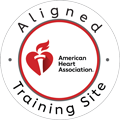In today’s world, knowing CPR and first aid is more important than ever. Emergencies can happen anywhere, at any time, and the ability to respond quickly can be the difference between life and death. Every year, thousands of lives are saved by individuals trained in CPR and first aid, often long before emergency medical services can arrive. This is why it’s crucial to embark on your journey to certification, whether you’re a healthcare professional, a teacher, a parent, or simply someone who wants to be prepared for unexpected situations.
Understanding CPR and First Aid Basics
Cardiopulmonary resuscitation (CPR) is a life-saving technique used when someone’s breathing or heartbeat has stopped. It involves chest compressions and, in some cases, rescue breaths to maintain blood flow and oxygenation. First aid encompasses a broader range of emergency responses, from treating minor injuries like cuts and burns to managing more serious situations like broken bones, choking, or even heart attacks. Proper training ensures you can handle these emergencies with confidence and competence.
Choosing the Right Training Program
Choosing the right training program is a key step in your journey from novice to expert. There are various options, including in-person courses, online classes, and a mix of both. In-person courses offer hands-on practice, while online courses can be more convenient for those with busy schedules. Additionally, you can choose between general first aid courses or those tailored to specific environments, like workplace safety or wilderness first aid. Major providers such as the American Red Cross and the American Heart Association offer reputable programs that cover a range of needs.
When selecting a training program, consider factors like cost, time commitment, and certification requirements. The cost of certification varies depending on the course type and provider, but it’s a worthwhile investment in your ability to respond to emergencies. Time commitment is another consideration, with courses ranging from a few hours to a full day or more. Certification requirements can differ depending on your location and the provider, so it’s important to ensure the program you choose meets any legal or professional standards.
What to Expect in Training
What can you expect during training? A typical course curriculum includes both theoretical and practical components. You’ll learn about the basics of CPR, first aid principles, and specific emergency scenarios. The practical aspect involves hands-on exercises, often using mannequins and specialized training equipment. This hands-on practice is invaluable, allowing you to develop muscle memory and build confidence in your skills. At the end of the course, you’ll typically undergo a skills test to earn your certification.
Maintaining and Renewing Certification
Maintaining and renewing certification is crucial to staying prepared. Most certifications are valid for two years, after which you’ll need to renew them through refresher courses or full retakes. These courses update you on the latest protocols and give you a chance to refresh your skills. It’s also important to practice regularly to keep your skills sharp. Consider setting up periodic training sessions with colleagues, friends, or family to ensure everyone is ready to respond in an emergency.
Once you’re certified, putting your training into action involves a few key steps. Start by creating a first aid kit for your home, car, or workplace, ensuring it contains all the essentials. Having a plan for emergencies is equally important. Make sure everyone in your household or workplace knows what to do in various scenarios and where the first aid kit is located. Legal considerations also come into play when providing aid. Familiarize yourself with Good Samaritan laws in your area, which protect individuals who provide emergency assistance in good faith.
Call Us Now
Get the Best CPR Class in Kansas City Today!
Building Expertise Over Time
Building expertise over time involves pursuing more advanced training. If you’re passionate about CPR and first aid, consider becoming an instructor or earning specialist certifications, such as Advanced Cardiovascular Life Support (ACLS) or Pediatric Advanced Life Support (PALS). Joining a volunteer team for sports events or community activities is another excellent way to gain experience and contribute to public safety. Staying informed about the latest protocols and techniques ensures that you’re always prepared for new challenges.
The journey from novice to expert in CPR and first aid certification is a rewarding one. The skills you learn can save lives and make a significant difference in emergencies. If you’re considering getting certified, now is the perfect time to start. Remember, anyone can gain this vital knowledge, and the benefits extend far beyond yourself. By taking the initiative, you become a valuable asset to your community, ready to step in when it matters most. Enroll in a course today, and take the first step toward becoming a certified CPR and first aid expert.
Conclusion
Embarking on the journey from novice to expert in CPR and First Aid is not just about acquiring a new skill; it’s about becoming a vital link in the chain of survival for those in need. Mastering these life-saving techniques equips you to respond confidently and effectively in emergencies, making a profound difference in your community. Whether you are a parent, a teacher, a healthcare professional, or simply someone who wants to be prepared, obtaining your CPR certification is an essential step toward preparedness and empowerment.
Don’t wait until it’s too late to make a difference. Enroll today in a CPR certification course in Kansas City and join a community of well-prepared individuals ready to act when it matters most. Visit CPR Kansas City to find the right course for you and take the first step towards becoming a certified life-saver. Your journey from novice to expert starts now—get your CPR certification in Kansas City and be ready to save lives.


